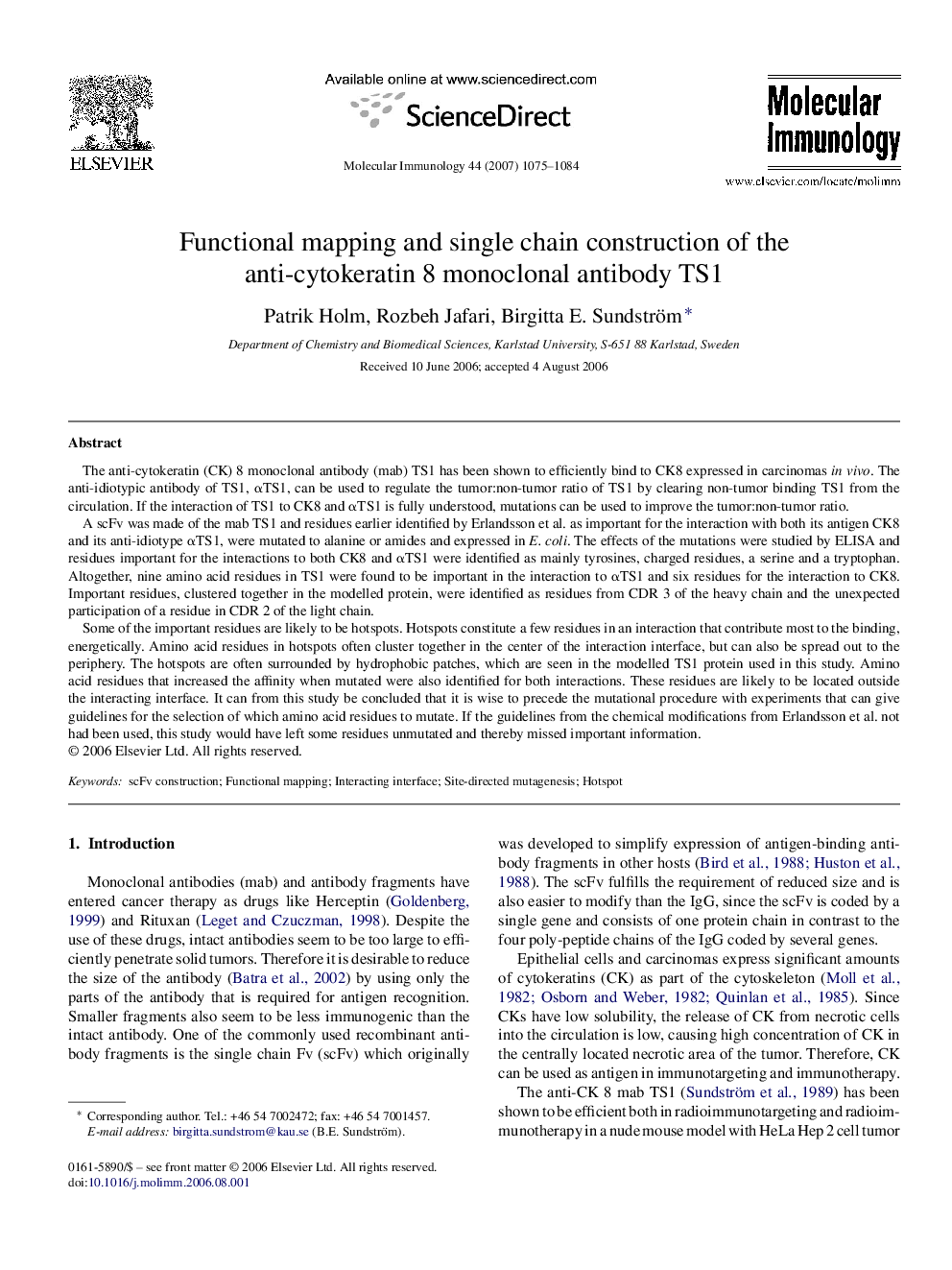| Article ID | Journal | Published Year | Pages | File Type |
|---|---|---|---|---|
| 2832460 | Molecular Immunology | 2007 | 10 Pages |
The anti-cytokeratin (CK) 8 monoclonal antibody (mab) TS1 has been shown to efficiently bind to CK8 expressed in carcinomas in vivo. The anti-idiotypic antibody of TS1, αTS1, can be used to regulate the tumor:non-tumor ratio of TS1 by clearing non-tumor binding TS1 from the circulation. If the interaction of TS1 to CK8 and αTS1 is fully understood, mutations can be used to improve the tumor:non-tumor ratio.A scFv was made of the mab TS1 and residues earlier identified by Erlandsson et al. as important for the interaction with both its antigen CK8 and its anti-idiotype αTS1, were mutated to alanine or amides and expressed in E. coli. The effects of the mutations were studied by ELISA and residues important for the interactions to both CK8 and αTS1 were identified as mainly tyrosines, charged residues, a serine and a tryptophan. Altogether, nine amino acid residues in TS1 were found to be important in the interaction to αTS1 and six residues for the interaction to CK8. Important residues, clustered together in the modelled protein, were identified as residues from CDR 3 of the heavy chain and the unexpected participation of a residue in CDR 2 of the light chain.Some of the important residues are likely to be hotspots. Hotspots constitute a few residues in an interaction that contribute most to the binding, energetically. Amino acid residues in hotspots often cluster together in the center of the interaction interface, but can also be spread out to the periphery. The hotspots are often surrounded by hydrophobic patches, which are seen in the modelled TS1 protein used in this study. Amino acid residues that increased the affinity when mutated were also identified for both interactions. These residues are likely to be located outside the interacting interface. It can from this study be concluded that it is wise to precede the mutational procedure with experiments that can give guidelines for the selection of which amino acid residues to mutate. If the guidelines from the chemical modifications from Erlandsson et al. not had been used, this study would have left some residues unmutated and thereby missed important information.
